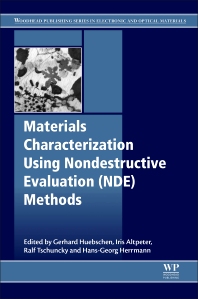Books in Materials testing
Books in Materials testing

Metal Fatigue Testing and Analysis
- 1st Edition
- Yung-Li Lee
- English

Weathering
- 1st Edition
- George Wypych
- English

Non-Destructive Testing and Condition Monitoring Techniques for Renewable Energy Industrial Assets
- 1st Edition
- Mayorkinos Papaelias + 2 more
- English

Transient Electromagnetic-Thermal Nondestructive Testing
- 1st Edition
- Yunze He + 3 more
- English

Thermal Stress Analysis of Composite Beams, Plates and Shells
- 1st Edition
- Erasmo Carrera + 1 more
- English

Comprehensive Materials Finishing
- 1st Edition
- M.S.J. Hashmi
- English

Materials Characterization Using Nondestructive Evaluation (NDE) Methods
- 1st Edition
- Gerhard Huebschen + 3 more
- English

Reliability and Failure of Electronic Materials and Devices
- 2nd Edition
- Milton Ohring + 1 more
- English

Metal Fatigue Analysis Handbook
- 1st Edition
- Yung-Li Lee + 2 more
- English

Standardisation of Thermal Cycling Exposure Testing
- 1st Edition
- Volume 53
- M Schütze + 1 more
- English